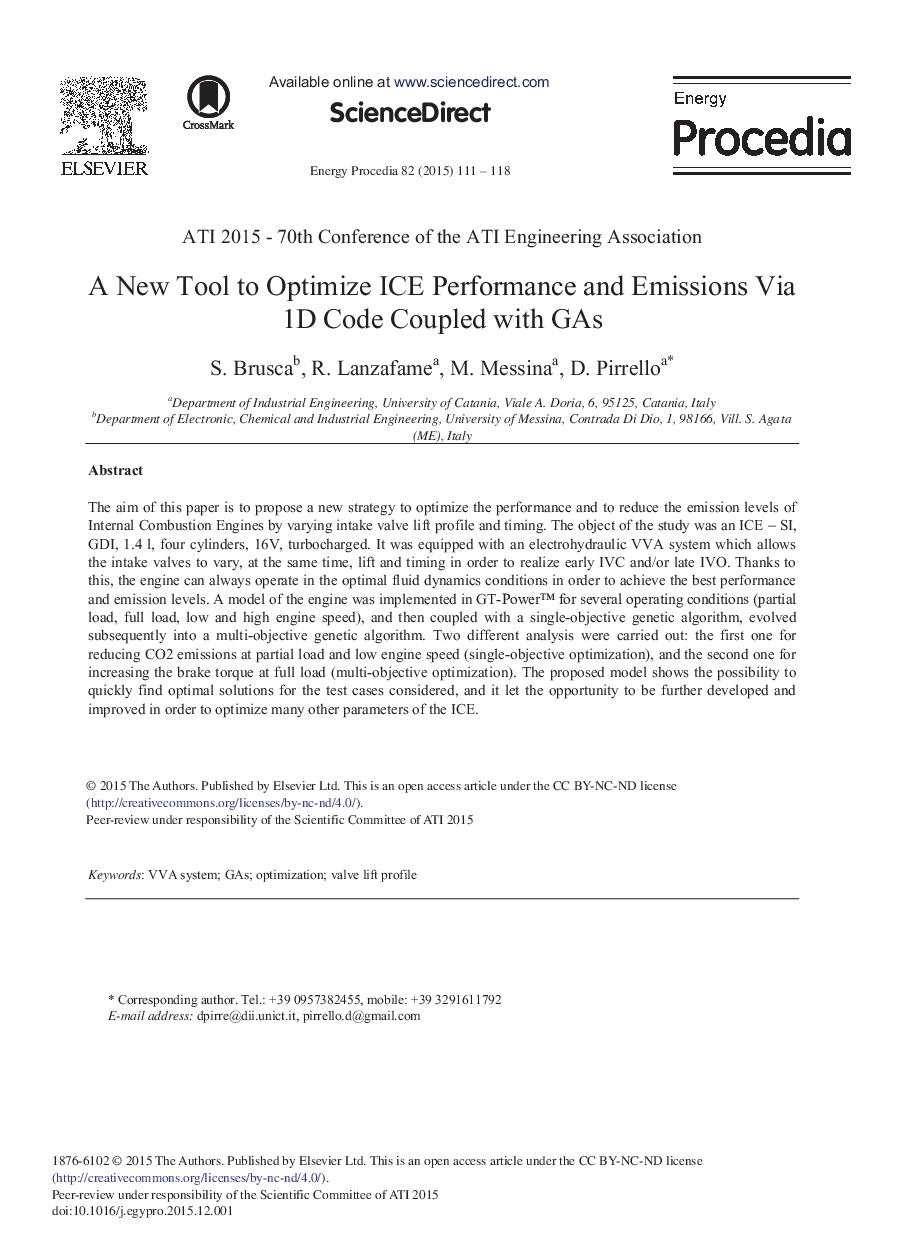| Article ID | Journal | Published Year | Pages | File Type |
|---|---|---|---|---|
| 1509046 | Energy Procedia | 2015 | 8 Pages |
The aim of this paper is to propose a new strategy to optimize the performance and to reduce the emission levels of Internal Combustion Engines by varying intake valve lift profile and timing. The object of the study was an ICE – SI, GDI, 1.4 l, four cylinders, 16 V, turbocharged. It was equipped with an electrohydraulic VVA system which allows the intake valves to vary, at the same time, lift and timing in order to realize early IVC and/or late IVO. Thanks to this, the engine can always operate in the optimal fluid dynamics conditions in order to achieve the best performance and emission levels. A model of the engine was implemented in GT-Power™ for several operating conditions (partial load, full load, low and high engine speed), and then coupled with a single-objective genetic algorithm, evolved subsequently into a multi-objective genetic algorithm. Two different analysis were carried out: the first one for reducing CO2 emissions at partial load and low engine speed (single-objective optimization), and the second one for increasing the brake torque at full load (multi-objective optimization). The proposed model shows the possibility to quickly find optimal solutions for the test cases considered, and it let the opportunity to be further developed and improved in order to optimize many other parameters of the ICE.
